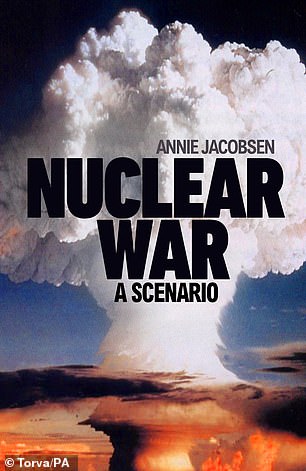Forests and cities are burning out of control all over the world. Rivers and lakes are frozen and poisoned by rotting corpses and radiation.
The few humans who survived reverted to hunter-gatherers as agriculture collapsed, while blind and sterile survivors fought for scraps in the ruins.
These are the dystopian scenes depicted in a new book that takes a detailed look at how modern civilisation would crumble after a nuclear attack.
By Annie Jacobsen Nuclear war: a scenarioPublished in March, it is based on exclusive interviews with world-leading scientists and experts on nuclear winter.
They describe how, in the days after multiple nuclear weapons were launched around the world, radioactive soot would fill the air for months, causing temperatures in the U.S. to drop by about 40°F, making farming impossible.
When the smoke clears, the ozone layer will be so depleted that the sun’s rays will cause deadly burns.
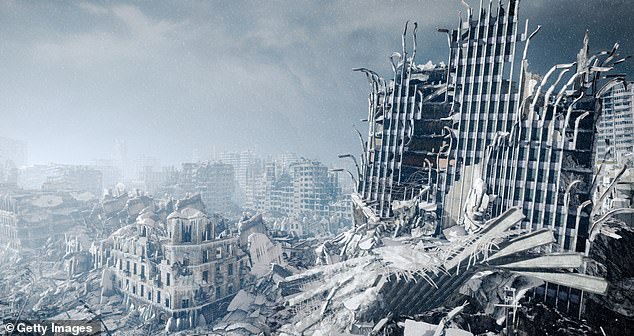
A nuclear war would destroy cities and towns, flattening buildings and large structures and creating wildfires.
Experts predict that a global nuclear war would cause the deaths of 360 million people almost instantly after the bombs fell, but Jacobsen’s book makes clear that these deaths would be just the beginning. His sources say that 5 billion would die in the first 72 minutes alone.
She wrote: ‘Most will not get more than a few steps from where they are when the bomb detonates. They will become what civil defence experts called in the 1950s, when these gruesome calculations first emerged, ‘dead when found’.
For those who don’t die instantly, survivors face barren land, wildfires, frozen terrain, radiation exposure, lack of food, widespread ruins, and disease.
Minutes after the launch of nuclear bombs: the United States is paralyzed
In Jacobsen’s book, she writes about a fictional scenario in which North Korea fires intercontinental ballistic missiles (ICBMs) at the United States.
After detecting the launch, the US responds by launching its own nuclear attack by sending missiles over Russia towards North Korea.
Russia then orders its own nuclear attack against the United States and its allied countries.
Thousands of massive fireballs begin to batter American cities and towns, and in every location, buildings and monuments collapse and asphalt melts.
Cities are destroyed. Power grids and nuclear plants melt down, cutting off electricity and power and releasing radioactive materials into the air.
Tens of millions of people die almost instantly.
The United States is paralyzed.
Hours after ICBM strike: devastating fires burn forests and cities
Wildfires are raging across the Northern Hemisphere, with nearly everything burning in the United States, including cities, crops and forests. Rings of fire extend 100 to 200 miles from each nuclear ground zero.
Buildings catch fire, releasing airborne toxins from their materials. Burning insulation and fiberglass release cyanides, vinyl chloride, dioxins and furans.
These chemicals damage organs and the nervous system, causing cancer, neurological symptoms and death.
Wildfires rage across Western states, and radioactive fallout kills conifers and creates fuel for future fires.
And with water supplies compromised across the country, there is nothing to fight the flames, leaving them to burn freely across the United States.
Days after the attacks: Radioactive mushroom clouds fill the air
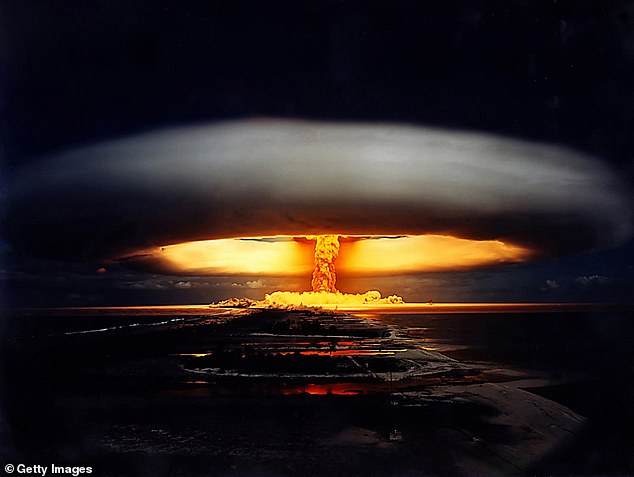
Radioactive dust will fall on survivors, sickening and killing them.
Radioactive products of mushroom clouds, including strontium-90, iodine-131, tritium, cesium-137 and plutonium-239, poison the environment.
These damage DNA and have been linked to cancers, chemical burns to the retina and skin, hemorrhages, coma and death.
Those who survive the initial radiation begin to die from illness and poisoning, which cause nausea, vomiting, fever, dizziness, disorientation, vomiting of blood and diarrhea, internal bleeding and infections.
High radiation exposure in such a short period of time causes the inside of people’s bodies to liquefy as the lining of their blood vessels disintegrates.
The few that survive will suffer chromosomal damage, blindness and sterility.
Weeks after nuclear war broke out: soot covers the atmosphere
In the weeks following the intercontinental ballistic missile launches, supplies of natural gas and coal in the Earth’s crust and peatlands (dense wetlands of decaying vegetation) continue to burn unchecked.
As cities and forests around the world burn, an estimated 330 billion pounds of soot are released into the upper troposphere and stratosphere (the lowest and second-lowest layers of Earth’s atmosphere, respectively).
The dense soot blocks the sun’s rays and the planet’s temperatures drop dramatically, preparing the Earth for a nuclear winter.
Months after missile strike: nuclear winter descends on the planet
Climatologist Alan Robock said: “The density of soot would reduce global temperatures by about 27 degrees Fahrenheit. In the United States, it would be more like a 40-degree reduction, slightly less so near the oceans.”
The idea of ”nuclear winter” first came to the world in an article by scientist Carl Sagan in 1983.
The first scientific paper explaining the idea was rejected by the Department of Defense as Soviet disinformation, but more recent information reveals that many in the nuclear weapons complex knew it was a real risk.
Scientists at the Defense Nuclear Agency wrote that there would be “atmospheric trauma” and a “serious potential for severe consequences” following a nuclear exchange.
The amount of sunlight that warms the environment is reduced by 70 percent and temperatures are plummeting, with the United States and Europe among the most affected areas.
In Central American states, temperatures will not rise above freezing for years.
Lack of sunlight kills much of the planet’s vegetation and animal life.
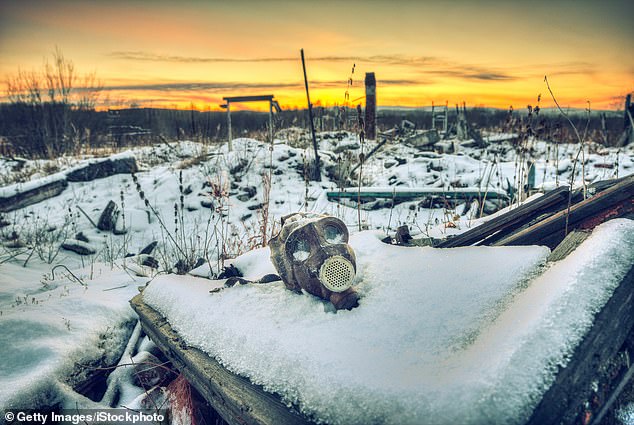
The idea of ”nuclear winter” first came to world attention in a paper by scientist Carl Sagan in 1983.
Decades after the aftermath: humans were forced to become hunter-gatherers again
Prolonged freezing temperatures and lack of sunlight reduce rainfall by 50 percent, killing crops around the world.
The surviving humans revert to a hunter-gatherer state, with millions starving and survivors killing each other to obtain the limited food supplies. Humans must scavenge for roots, insects, and the few sources of uncontaminated water.
Lakes are frozen under deep layers of ice and other water sources are poisoned by chemicals from industrial facilities.
Years after the catastrophe, when the world finally thaws out, millions of thawing corpses poison water supplies and survivors along the coasts discover that filter-feeding shellfish have either been killed by radiation or are now too radioactive to eat.
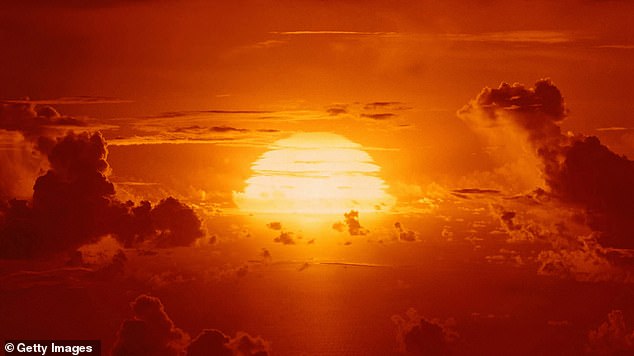
After thousands of hydrogen bombs are dropped on the United States, the ozone layer will no longer be able to protect the Earth from the sun’s powerful rays.
Several years later, the soot has settled and the ozone layer has lost 75 percent of its protective power, which will allow the sun’s strong rays to reach the Earth without any filter, causing deadly sunburns.
A 2021 study on “Extreme ozone loss following a nuclear war” predicted that UV-B levels would become “life-threatening.”
Survivors would be forced to take refuge in caves and holes.
Humans would also face pests, with insects multiplying and thawing corpses, forming a fertile breeding ground for disease.
Studies have shown that insects are well placed to survive a nuclear war, and as the world warms, insect-borne diseases will devastate a human population without antibiotics or medicines.
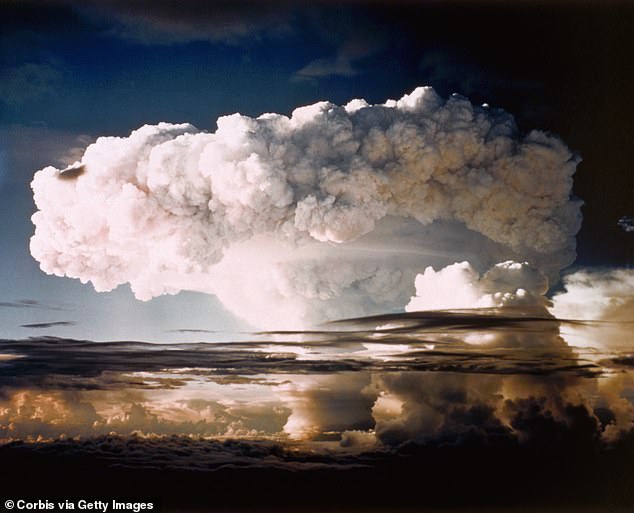
Future civilizations may never understand how ours came to an end.
Thousands of years after nuclear bombings: all evidence of current civilization is erased
Albert Einstein famously said about nuclear war: “I do not know with what weapons World War III will be fought, but World War IV will be fought with sticks and stones.”
Even when temperatures return to pre-war conditions, humans of the future, still living a hunter-gatherer lifestyle, may never know anything about the people who came before them, those who met their demise at the hands of nuclear weapons.
Jacobsen said they may never discover any trace of present-day civilization and all knowledge of the past will disappear.
She wrote: ‘In time, after a nuclear war, all current knowledge will disappear. Including the knowledge that the enemy was not North Korea, Russia, the United States, China, Iran or any other vilified nation or group.
“Nuclear weapons were our enemy from the beginning.”

